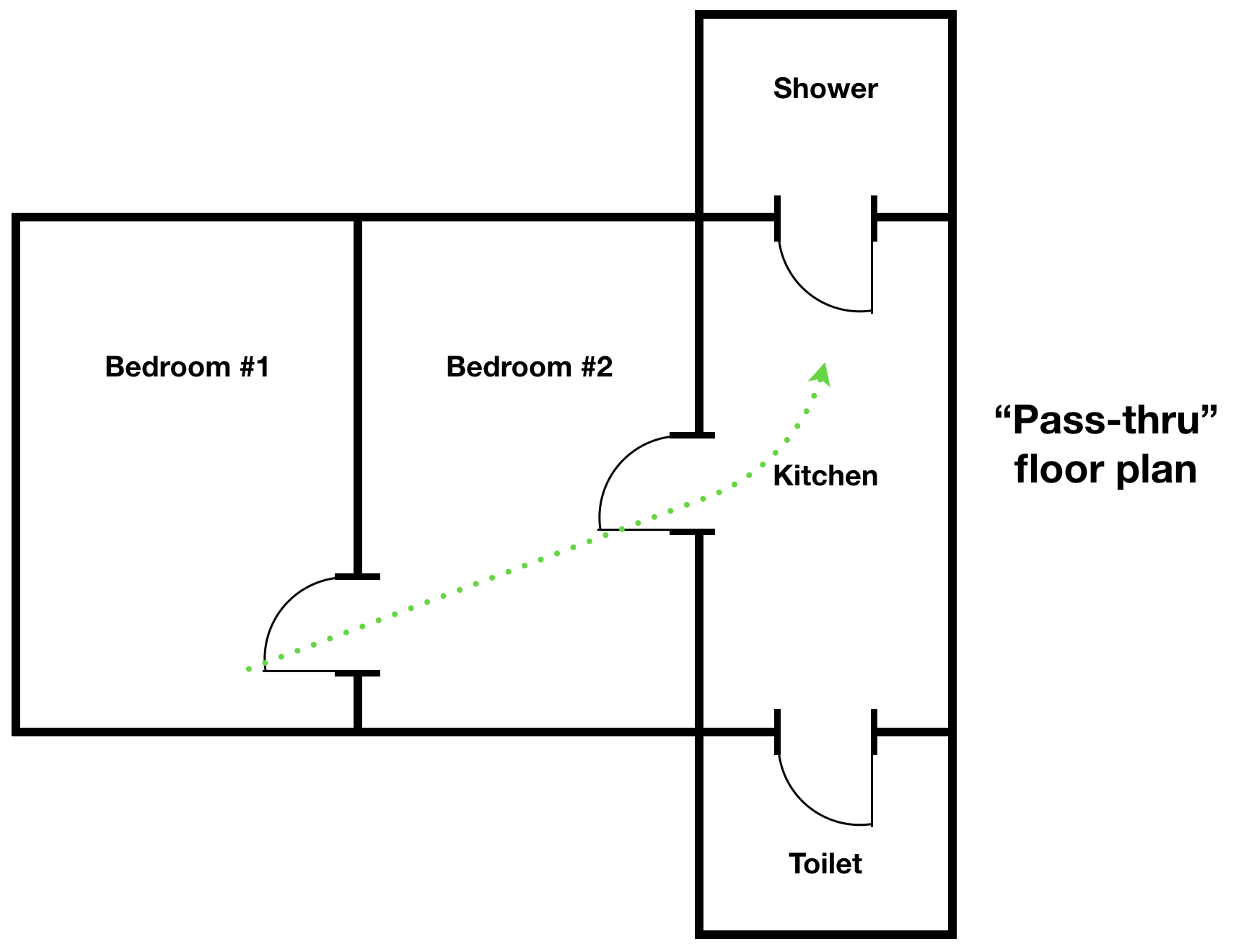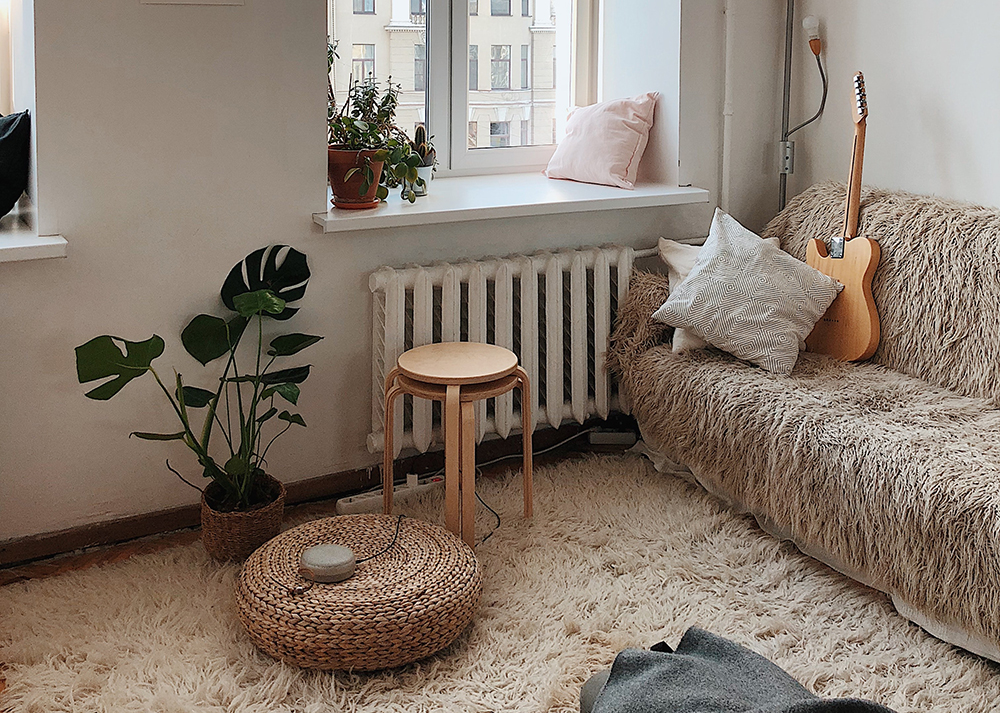STEP TWO: Get to know the Typical Prague Flat

Flats are classified like this: 1+kk, 1+1, 2+kk, 2+1, 3+kk, 3+1, etc. This is the amount of rooms, not bedrooms, but all the rooms. So,
1+1 = a bedroom, plus a kitchen
2+1 = two rooms, plus a kitchen
3+1 = three rooms, plus a kitchen
When you see “+kt” or “+kk” that means “kitchen corner”—meaning one of the rooms will have a corner with a kitchen in it, or a wall where a small kitchen has been added. This is important to note, because if you’re looking for a flat with a flatmate, a 2+kk means that one of you is going to have a kitchen in your bedroom, so you might want to look for a 2+1 or a 3+kk.
1+kk = studio
2+kk = two rooms, one of which has a small kitchen unit in it
3+kk = three rooms, one of which has a small kitchen unit in it

Many flats have “pass-thru” or “walk-through” rooms. That means that one of the rooms is in between another of the rooms and the rest of the flat (kitchen, toilet, etc.) If you don’t mind your flatmate walking through your room every time they need to go to the bathroom or get a snack, then maybe a walk-thru room is for you. You can often negotiate a cheaper price for a walk thru room with your flatmate.

Bathrooms are often in cut in half—meaning that the toilet is in one room and the shower room or “koupelna” is in another room with separate entrances. This actually comes in handy when you have flatmates.
Most older buildings don’t have lifts, or elevators, so also consider carrying your groceries up those stairs everyday.
Furnished or unfurnished?

If you're just moving to Prague with a few pieces of luggage you'll probably want an already furnished flat, which will be a little bit more expensive, probably 2500 Kč-3500 Kč more per month.
"Furnished" can mean anything from a bedroom with only a bed, mattress, desk, chair and a bare wood floor, or on the higher end: sofa pillows, coat rack, curtains, full kitchen equipment, mixing bowls, pots, pans, etc. It's good to consider all these things, and the expense you might incur if you have to buy a spatula and a set of knives, etc.
Most furnished bedrooms come with: bed (duvet, sheets usually not included), desk, chair, wardrobe (can be closed or open), drawers, optional bookshelf. Built-in storage space like closets are rare in the older classic buildings in the city center.
Living rooms: sofa, coffee table, arm chair. the layout of some flats make it so that the living room is a private room, and to save money, some people rent them out to other flatmates. In this case, the kitchen will be the common shared room.
Bathrooms: The toilet room and the shower room are usually split in two and located either next to each other or at other ends of a hallway. Most have washing machines, but no dryer. Czechs hang their laundry on hanging racks. It saves energy, if not time. Often there's a bathtub in lieu of a shower, with a detachable shower head and no shower curtain. This can be really awkward for Americans who often cannot manage to shower with only one free hand. My Czech friend who moved to Seattle was aghast at the immovable shower head in her American shower. "How do you wash all your parts??" she asked. How, indeed? Anyway, you'll get used to it.
Kitchens: Kitchens are generally outfitted with a stove, oven, fridge-freezer, a pot a pan, utensils, plates, cups, an electric kettle, teacups and a few cabinets worth of storage space, and some have dishwashers. All appliances are petit compared to American sizes. Our first fridge was a beer fridge the size of a suitcase, and we used it for, I kid you not, 3 years (for three people) before we decided we were big girls who deserved to refrigerate both milk and beer at the same time and bought ourselves a European fridge (still much smaller than any American fridge, but, again you just get used to it.)

One of the loveliest thing about living in a European capital is the accessibility of little specialty shops and farmer's markets. In the US, I'd drive to the supermarket and buy a week's worth of groceries, which fit in about 3-4 bags and required a basket and several trips to my kitchen from my car. In Prague, it's more typical to buy one bag of fresh items that I need for the day's meals and perhaps the next morning's breakfast. I sometimes still forget this while I'm at the large supermarket (where I rarely go, because I'm too lazy to go more than 2 km for grocery shopping) and emerge with hands full of grocery bags, only to realize that I'll barely fit on the tram with my bounty. So—small fridges. You'll deal. And you'll eat fresher and waste less.

ACTION STEP:
- Decide on your apartment must-have features, and fill out the housing worksheet. Remember, living like the locals is part of the adventure, and you might find that you don't even mind hand-washing dishes!
We'll see you in the next lesson.